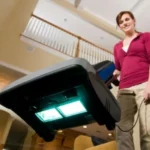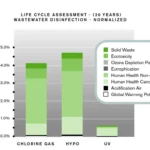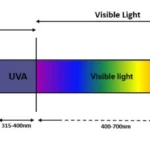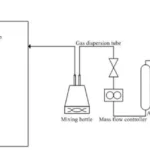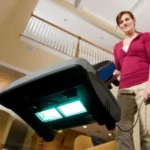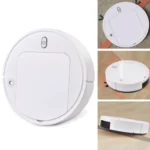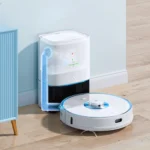The world is grappling with a deadly pandemic, and keeping our homes clean and germ-free has never been more important. With advances in technology, we now have a powerful weapon in our arsenal – UV-C light technology. But what exactly is UV-C light technology? How does it work? And most importantly, how can we use it to kill germs and bacteria in our homes? Dive into the science behind UV-C light technology, and learn how to harness its power in your cleaning routine.
What is UV-C Light Technology?
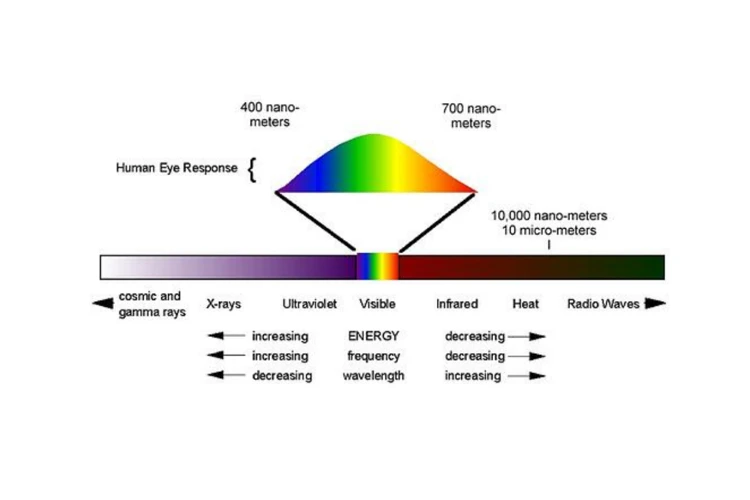
We all want to keep our homes clean and free from harmful germs and bacteria. With the ongoing COVID-19 pandemic and the recent allergy season, the need for effective home cleaning solutions has never been more crucial. One technology that has been gaining attention is UV-C Light. UV-C Light refers to ultraviolet light with wavelengths between 200 and 280 nanometers, which has been proven to effectively eliminate germs, bacteria, and viruses. This technology is not new, but only recently has it come into the mainstream as an effective home-cleaning solution. In this article, we will explore in detail what UV-C Light is, how it works, and how to use it in your home to achieve maximum cleanliness and safety. We will also discuss some of the benefits of this technology such as its effectiveness in fighting allergies and asthma.
Definition of UV-C Light
UV-C light is a specific type of ultraviolet light that is widely known for its germicidal and disinfecting properties. UV-C light has the shortest wavelength of all UV lights and is categorized as part of the electromagnetic spectrum with wavelengths from 200 to 280 nanometers.
UV-C light, also referred to as germicidal light, is a potent weapon in the fight against germs, bacteria, and viruses. It destroys the DNA and RNA of microorganisms, which effectively renders them incapable of reproducing or causing harm to humans.
Unlike other types of ultraviolet light, like UV-A and UV-B, which can cause harm to human skin and lead to skin cancer, UV-C light is not considered a significant health hazard to humans. Despite this, it’s important to remember that exposure to UV-C light can irritate the eyes and skin, which is why it should be used with caution and appropriate safety measures.
UV-C light technology has been used for decades in applications such as water treatment and air purification, and its use has become increasingly popular in recent years with the rise of smart home technology. There are various types of UV-C light systems available on the market, ranging from portable devices to HVAC systems and UV-C Light Robots.
UV-C light is an effective tool for killing germs, bacteria, and viruses in your home. It is a non-toxic way of disinfecting surfaces, the air, and water. By using UV-C light technology, you can help keep your home clean and healthy, especially during the cold and flu season. To learn more about the benefits of UV-C light in fighting allergies and asthma, you can read this article: “How UV-C Light Fights Allergies and Asthma”. Additionally, for tips and tricks on maximizing the effects of UV-C light, check out this article: “Maximizing the Effects of UV-C Light: Tips and Tricks”.
How UV-C Light Works
UV-C light works by emitting short wavelength, high energy ultraviolet rays. When the UV-C rays come into contact with microorganisms, they damage the DNA and RNA of the cells, rendering them unable to replicate and ultimately killing them. This process is known as germicidal irradiation.
The table below summarizes the key points of how UV-C light works:
| Step | Description |
|---|---|
| Step 1: | UV-C light is emitted from a source, such as a lamp or LED. |
| Step 2: | The UV-C light penetrates the cell walls of microorganisms. |
| Step 3: | The high energy of the UV-C rays damages the DNA and RNA of the cell. |
| Step 4: | The damage to the DNA and RNA of the cell prevents replication and ultimately kills the organism. |
UV-C light is particularly effective against bacteria, viruses, and fungi, making it a powerful tool in the fight against germs and disease. However, it is important to note that UV-C light can also damage human skin and eyes, so precautions should be taken when using UV-C light technology.
Understanding how UV-C light works is crucial in realizing its potential to effectively kill germs and bacteria. To learn more about the benefits of UV-C smart vacuums, check out this article. Or, to compare UV-C light technology with HEPA filters in addressing allergies and asthma, check out this article.
Benefits of UV-C Light Technology
UV-C light technology offers several benefits that make it a popular choice for eliminating germs and bacteria in your home. Here are some of the key benefits of using UV-C light technology:
- Effective against a wide range of microorganisms: UV-C light technology is highly effective against bacteria, viruses, fungi and other types of microorganisms that may be present in your home.
- Chemical-free cleaning: Unlike other disinfecting methods that require chemicals, UV-C light technology is completely chemical free. This is especially beneficial for those who suffer from allergies or sensitivity to chemicals.
- Easy to use: Using UV-C light technology is extremely easy, and it does not require any additional skills or expertise. Simply switch on the device and let it do its job.
- No residue left behind: Unlike other disinfecting methods that may leave behind a residue, UV-C light technology does not leave behind any residue. This means that you do not have to worry about cleaning up after you have used the device.
- Long-lasting protection: UV-C light technology provides long-lasting protection against germs and bacteria. Once you have used the device, you can rest assured that the area is free from harmful microorganisms for an extended period of time.
- Safe for humans and pets: While UV-C light technology is highly effective against germs and bacteria, it is completely safe for humans and pets. This means that you do not have to worry about any harmful side effects or risks.
UV-C light technology is an effective, easy-to-use and chemical-free method for eliminating germs and bacteria in your home. Whether you are looking for a way to keep your home clean and healthy, or you simply want to ensure that your family is protected from harmful microorganisms, UV-C light technology is a great choice.
How UV-C Light Kills Germs and Bacteria?
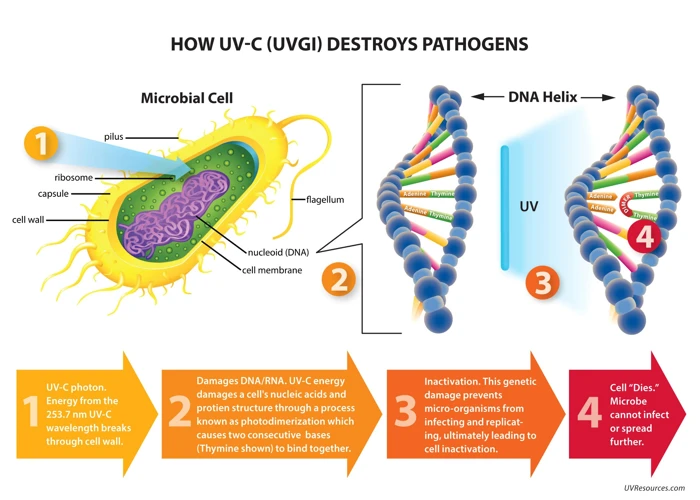
Have you ever wondered how UV-C light can effectively kill germs and bacteria? As invisible pathogens fill the air in our homes and on our surfaces, it’s important to understand the science behind UV-C light technology. By using the power of ultraviolet radiation, UV-C light can destroy the DNA and RNA of microorganisms, ultimately leading to their demise. Let’s dive deeper into the fascinating world of UV-C light and how it works to eliminate harmful bacteria and germs in your home.
UV-C Light Destroys DNA and RNA
When it comes to understanding how UV-C light kills germs and bacteria, it is important to understand the molecular level of what is happening. One of the key ways that UV-C light technology kills microorganisms is by damaging their DNA and RNA. This is due to the strong electromagnetic energy of UV-C light. Here are some key points to understand:
- UV-C light breaks apart nucleic acids: When UV-C light penetrates the cell walls of microorganisms, it damages their DNA and RNA. This happens because the energy from the wavelengths of the UV-C light is absorbed by the nucleic acids. The energy is so strong that it breaks the bonds that hold the nucleotides – the building blocks of nucleic acids – together.
- Destroyed nucleic acids result in death: Once the nucleic acids are broken apart, they can no longer replicate. This means that the microorganisms cannot reproduce, and new generations of harmful bacteria and viruses are not created. Over time, the population of microorganisms begins to die off, resulting in a cleaner environment.
- UV-C light does not discriminate: While UV-C light can harm beneficial bacteria as well as harmful bacteria, it is important to note that surface treatments with UV-C light are typically used to disinfect hard surfaces and objects, rather than living tissue or organs. This means that using UV-C light for disinfection purposes in the home is generally safe and effective.
Understanding how UV-C light destroys DNA and RNA is a key part of understanding how it works to kill germs and bacteria. By breaking apart nucleic acids, UV-C light effectively destroys the ability for microorganisms to replicate, reducing their numbers and creating a cleaner environment.
UV-C Light Technology and Microorganisms
UV-C light technology is a powerful disinfectant that can eliminate various types of microorganisms. These microorganisms include viruses, bacteria, and mold. The DNA and RNA of these microorganisms absorb UV-C light, which causes the nucleic acids to break apart, ultimately leading to the death of the microorganisms.
Viruses: UV-C light technology can be effective against various types of viruses, such as influenza and COVID-19. According to a study published in the Journal of Virological Methods, UV-C light can inactivate COVID-19 after a dose of 3.7 mJ/cm^2. It is important to note that while UV-C light can kill viruses, it may not be effective against all strains.
Bacteria: UV-C light technology can also be effective in killing bacteria, including common strains such as E. coli and Salmonella. Studies have shown that UV-C light can kill up to 99.9% of bacteria on surfaces such as countertops and floors. However, it is important to note that UV-C light may not be as effective against bacterial spores.
Mold: Mold is a type of fungus that can grow in moist environments, such as bathrooms and basements. UV-C light can be effective in eliminating mold spores, which can trigger allergies and asthma. According to a study published in the Journal of Applied Microbiology, UV-C light can reduce mold growth by up to 96%.
In addition to its effectiveness against these microorganisms, UV-C light technology has other benefits as well. It does not produce harmful byproducts or residues, making it a safe and eco-friendly disinfectant option. It is also a cost-effective alternative to traditional disinfectants, especially in large-scale applications.
However, it is important to note that UV-C light technology should not be used as a replacement for proper cleaning practices. It should be used in conjunction with regular cleaning to provide an extra layer of disinfection.
Effectiveness of UV-C Light Technology
UV-C light technology has been proven highly effective in eliminating germs, bacteria and other microorganisms in various settings. The effectiveness of this technology is largely attributed to its ability to destroy the DNA and RNA of these microorganisms.
According to a study by the National Center for Biotechnology Information, “UV-C radiation led to a significant reduction in the concentration of all bacterial strains investigated, and the time required for the inactivation of each bacterial strain was inversely proportional to the initial concentration of that strain”. In simpler terms, the more germs and bacteria present, the longer it takes for the UV-C light technology to completely eliminate them.
However, it’s important to note that the effectiveness of UV-C light technology also depends on factors such as the distance between the light source and the surface or object being disinfected, the amount of time the surface or object is exposed to the light, and the angle at which the light is hitting the surface.
The table below shows the effectiveness of UV-C light technology against various microorganisms:
| Microorganism | UV-C Light Effectiveness |
| Staphylococcus Aureus | 99.99% |
| Escherichia Coli | 99.999% |
| Influenza Virus Type A | 99.99% |
| Salmonella Typhimurium | 99.999% |
As seen in the table, UV-C light technology is highly effective in eliminating various types of microorganisms. It’s also important to note that the effectiveness of UV-C light technology is not limited to specific types of surfaces or objects, making it a versatile disinfection method. However, it’s crucial to use UV-C light technology as directed and take proper precautions to ensure safety during use.
Types of UV-C Light Systems
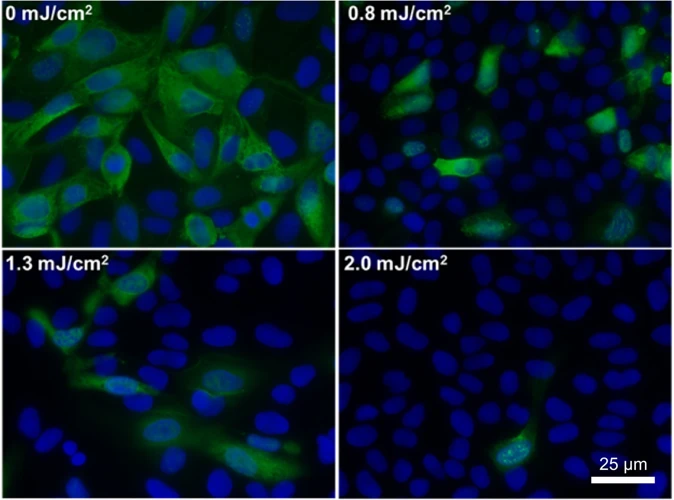
Now that we’ve explored the science of UV-C light and its ability to kill germs and bacteria, let’s take a closer look at the different types of systems that use this technology. From portable devices to HVAC systems and even robots, there are several options available for homeowners to choose from. Each one has its own unique benefits and drawbacks, so it’s important to understand which one will work best for your needs. So, grab a cup of tea and let’s dive into the world of UV-C light systems.
Portable UV-C Light Devices
Portable UV-C light devices are an effective and convenient way to kill germs and bacteria in your home. These devices come in a variety of shapes and sizes, and can be used on a range of surfaces and items. One of the main benefits of using a portable UV-C light device is its ability to kill up to 99.9% of germs and bacteria within seconds of exposure.
Some popular types of portable UV-C light devices include UV-C wands and UV-C boxes. UV-C wands are handheld devices that emit UV-C light and can be used to sanitize surfaces and items, such as countertops, keyboards, and phones. UV-C boxes, on the other hand, are larger devices that can be used to sanitize larger items, such as toys, books, and even shoes.
When using a portable UV-C light device, it’s important to take precautions to protect yourself from exposure to UV-C light. It’s recommended to wear protective gear, such as gloves and goggles, and to avoid looking directly at the UV-C light.
Additionally, it’s important to follow the manufacturer’s instructions for the specific device you’re using. Some devices may require multiple passes over a surface or longer exposure times to effectively sanitize.
While portable UV-C light devices can be a useful tool in your cleaning arsenal, they should not be relied on as the sole method of sanitization. Regular cleaning with soap and water or disinfectant is still necessary to remove dirt and other contaminants before using a portable UV-C light device.
HVAC UV-C Light Systems
One of the most commonly used types of UV-C light systems in homes and other buildings is the HVAC UV-C light system. This system involves installing strong UV-C lamps in the ducts of your heating, ventilation, and air conditioning (HVAC) system. These lamps emit UV-C light that helps to improve indoor air quality and kill germs and bacteria that may be circulating in the air.
The benefits of HVAC UV-C light systems include:
- Improved air quality: By eliminating harmful microorganisms in your HVAC system, you can enjoy cleaner air and reduce the risk of respiratory infections.
- Increased energy efficiency: UV-C light can help to keep your HVAC system clean and free of buildup, which can improve its efficiency and extend its lifespan.
- Reduced odors: UV-C light can also help to eliminate unpleasant odors caused by mold, bacteria, and organic material in your HVAC system.
How do HVAC UV-C light systems work?
When air passes through your HVAC system, it also passes through the UV-C lamps installed in the ducts. The UV-C light emitted by these lamps kills any microbial contaminants, including viruses, bacteria, and fungi, that may be present in the air. This improves the overall air quality and reduces the risk of illness.
Installation and maintenance of HVAC UV-C light systems
To install an HVAC UV-C light system, a qualified technician will need to access your ductwork and wiring system. Once installed, these systems require regular maintenance to ensure optimal performance. This may include replacing the UV-C lamps and performing routine cleaning of the ductwork to prevent buildup and obstruction.
HVAC UV-C light systems are an effective and convenient way to improve the air quality in your home and protect your family from harmful germs and bacteria. If you’re considering installing a UV-C light system in your HVAC system, be sure to consult with a qualified professional to ensure the best results.
UV-C Light Robots
UV-C light robots are a newer and more sophisticated method of using UV-C light technology to kill germs and bacteria in your home. These robots are equipped with UV-C lamps and are programmed to move around your living space, emitting UV-C light beams that eliminate harmful microorganisms on surfaces.
Advantages of UV-C Light Robots:
- They are fully automated, allowing for maximum sanitization without the need for manual labor.
- They are designed to work without any human intervention, making them an ideal solution for people with busy lifestyles.
- UV-C light robots can cover large areas and reach difficult-to-reach places, such as under furniture and in corners.
- They are effective in neutralizing a wide range of microorganisms, including viruses, bacteria, and molds, providing a higher level of protection compared to other methods.
Limitations of UV-C Light Robots:
- UV-C light robots can be expensive, making them an investment in sanitization.
- They require regular maintenance and replacement of the UV-C lamps to maintain their effectiveness in killing germs and bacteria.
- Some models may not be suitable for use around humans or pets due to the high level of UV-C light they emit, which can be harmful if exposure is prolonged.
How UV-C Light Robots Work:
UV-C light robots work by emitting UV-C radiation that is highly efficient in killing microorganisms. They are equipped with sensors and mapping technology that allows them to navigate around the home while avoiding obstacles. Once activated, the robot will move around the room, emitting UV-C light beams that disinfect surfaces and kill any harmful microorganisms on them.
Use of UV-C Light Robots in Your Home:
UV-C light robots are easy to use and require minimal setup. They can be programmed to work at specific times or can be activated manually when needed. It is important to follow safety guidelines when using UV-C light robots and to ensure that they are placed in areas that need the most sanitization.
UV-C light robots are a highly effective and convenient way to sanitize your living space from harmful germs and bacteria. Though they may require a significant investment, their benefits outweigh their limitations for those who value clean and hygienic living spaces.
How to Use UV-C Light Technology in Your Home
Are you interested in using UV-C light technology in your home to disinfect surfaces, items, and air? Before using any UV-C light systems, there are some precautions and guidelines you should be aware of to ensure the effectiveness and safety of this technology. Let’s explore the proper ways to use UV-C light technology in your home and how to maintain it for optimum performance.
Precautions Before Using UV-C Light Systems
Before using any UV-C light system in your home, it is important to take certain precautions to ensure your safety and the safety of those around you. Here are some precautions to consider:
- Read and follow the manufacturer’s instructions: Before using any UV-C light system, it is important to carefully read and understand the manufacturer’s instructions for proper use and safety precautions.
- Protect your eyes and skin: UV-C light can be harmful to your eyes and skin. Always wear protective eyewear and gloves when using UV-C light systems. Also, avoid direct exposure to skin and eyes as much as possible.
- Keep the room empty: Before turning on your UV-C light system, make sure that the room is completely empty of people, pets, and plants. This is to prevent anyone from being accidentally exposed to the harmful rays.
- Avoid using near reflective surfaces: Because UV-C light can reflect off shiny surfaces, it is important to avoid using your UV-C light system near reflective surfaces such as mirrors or polished metals.
- Use in a well-ventilated area: When using UV-C light systems, it is important to use them in a well-ventilated area. This is to prevent the build-up of ozone, a byproduct of UV-C light that can be harmful if inhaled.
- Store UV-C light systems safely: When not in use, UV-C light systems should be stored safely away from children and pets in a secure location.
By taking these precautions, you can safely and effectively use UV-C light technology in your home to kill germs and bacteria, without putting yourself or others at risk of harm.
Using UV-C Light for Different Surfaces and Items
When it comes to using UV-C light technology to kill germs and bacteria on different surfaces and items in your home, it’s important to consider a few things. Not all surfaces and items are created equal, so you’ll need to adjust your approach accordingly to ensure that the UV-C light is effective in killing the germs and bacteria. Here’s a breakdown of how to use UV-C light for different surfaces and items:
| Surface/Item | UV-C Light Treatment |
|---|---|
| Bedding and linens | Run the UV-C light over the surface for 30 seconds to 1 minute, depending on the size of the item. Ensure that both sides of the item receive adequate exposure to the light. |
| Clothing and shoes | Hang the item up and run the UV-C light over it for 30 seconds to 1 minute. It’s important to ensure that all areas of the item receive adequate exposure to the light. |
| Furniture and surfaces | Run the UV-C light over the surface for 2-5 minutes, depending on the size of the area. Be sure to cover all areas of the surface to ensure that the light reaches any bacteria or germs hiding in crevices or other hard-to-reach areas. |
| Electronics (phones, tablets, remotes, etc.) | Hold the UV-C light about 2 inches from the item and run it over the surface for 30 seconds to 1 minute. Be sure to cover all areas of the item, including any buttons or crevices where germs and bacteria may hide. |
| Kitchen items (utensils, cutting boards, etc.) | Run the UV-C light over the surface for 2-5 minutes, depending on the size of the item. Be sure to cover all areas of the item, including any crevices or hard-to-reach areas. |
| Bathroom items (toothbrushes, razors, etc.) | Hold the UV-C light about 2 inches from the item and run it over the surface for 30 seconds to 1 minute. Be sure to cover all areas of the item, including any crevices or hard-to-reach areas. |
It’s important to note that UV-C light can be harmful to humans and animals, so it’s essential to follow safety precautions when using it in your home. Additionally, while UV-C light technology has been proven effective in killing germs and bacteria, it should be used in conjunction with other cleaning and disinfecting methods to ensure a healthy and safe home environment for you and your family. With the right precautions and approach, UV-C light can be a powerful tool in your home cleaning arsenal.
Frequency of Use and Maintenance
Maintaining the cleanliness of your home is a never-ending task, especially if there are members of the household who frequently go outside or if you regularly have visitors. To aid in your cleaning efforts, you can use UV-C light technology to kill germs and bacteria. However, to ensure that your UV-C light system remains effective in killing germs and bacteria, you must use it properly and maintain it regularly. Here are some tips for the frequency of use and maintenance of your UV-C light system:
- Use UV-C light system as needed: You do not need to use UV-C light every day, but rather as needed. If someone in your household is sick or if you have recent visitors, then it may be a good time to use your UV-C light system to disinfect any surfaces they may have touched. Additionally, if you regularly bring items into your home from outside, such as groceries or packages, you may want to use your UV-C light system as an extra precaution.
- Clean and replace UV-C light bulbs: The bulbs inside your UV-C light system will degrade over time and lose their effectiveness in killing germs and bacteria. It is recommended that you replace the bulbs every 6-12 months, depending on the manufacturer’s recommendations. Additionally, you should wipe down the bulbs and the interior of the system with a clean, damp cloth regularly to remove any dust or debris that may accumulate.
- Store UV-C light systems properly: When not in use, it is important to store your UV-C light system properly to ensure its longevity. Be sure to keep it in a cool, dry place away from direct sunlight, as UV-C light can degrade certain materials over time. Additionally, make sure the system is unplugged and the bulbs are cool before storing.
- Replace or clean filters: If your UV-C light system has a filter, it is important to replace or clean it regularly. This will help ensure that the system is working efficiently and effectively in killing germs and bacteria. Check the manufacturer’s recommendations for the frequency of filter replacement or cleaning.
- Get professional maintenance: If you are unsure about how to properly maintain your UV-C light system or if you notice that it is not working as effectively as it used to, it may be time to seek professional maintenance. A trained technician can inspect your system, identify any issues, and provide recommendations for maintenance or repair.
By following these tips for the frequency of use and maintenance of your UV-C light system, you can help ensure that your home is clean and free from harmful germs and bacteria. Remember to use your UV-C light system as needed, clean and replace bulbs and filters, store the system properly, and seek professional maintenance if necessary.
Conclusion
In conclusion, UV-C light technology has proven to be an effective and efficient way of eliminating germs and bacteria in your home. By using UV-C light systems, you can create a healthier, cleaner living environment for you and your family.
However, it is important to remember that UV-C light can be harmful to humans and requires proper precautions to be taken. It is always recommended to wear protective eyewear and clothing when operating UV-C light systems, and to keep them out of reach of children and pets.
Additionally, the effectiveness of UV-C light technology is dependent on various factors, such as the surface area and proximity of the UV-C light. It is important to follow manufacturer instructions carefully and use the appropriate type of UV-C light system for the specific area or surface you’re trying to sanitize.
Furthermore, it is crucial to note that UV-C light technology is not a replacement for traditional cleaning methods. Rather, it should be used as an additional step to enhance the cleanliness and sanitation of your home.
Overall, incorporating UV-C light technology into your cleaning routine can be a valuable investment in the health and well-being of your household. By understanding the technology behind UV-C light and using it safely and properly, you can create a safer and healthier living environment for you and your loved ones.
Frequently Asked Questions
1. Can UV-C light technology effectively kill viruses and bacteria?
Yes, UV-C light technology has been proven to effectively kill viruses and bacteria by destroying their DNA and RNA strands.
2. Is UV-C light technology safe for humans?
Direct exposure to UV-C light can be harmful to human skin and eyes, but when used properly and with precautions, UV-C light systems are safe for use in homes.
3. What surfaces can UV-C light technology be used on?
UV-C light can be used on most surfaces, including counters, floors, and electronic devices.
4. How often should UV-C light systems be used?
The frequency of use depends on user preferences and needs, but most UV-C light systems can be used daily or as needed.
5. Can UV-C light technology be used to disinfect air?
Yes, HVAC UV-C light systems can be used to disinfect air and prevent the spread of bacteria and viruses.
6. Do portable UV-C light devices work on all types of bacteria and viruses?
Portable UV-C light devices can effectively kill most types of bacteria and viruses, but some may require longer exposure times.
7. Can UV-C light technology be used to disinfect food?
No, UV-C light technology should not be used to disinfect food or food contact surfaces.
8. What are the main benefits of UV-C light technology compared to other disinfection methods?
UV-C light technology does not require the use of chemicals or water and can effectively kill a wide range of bacteria and viruses in a relatively short amount of time.
9. Are UV-C light robots effective in large spaces?
UV-C light robots can effectively disinfect large spaces when used properly and with adequate exposure times.
10. Can UV-C light technology be used to disinfect medical equipment?
Yes, UV-C light technology can be used to disinfect medical equipment, but proper precautions should be taken to ensure that the equipment is not damaged or contaminated during the process.

